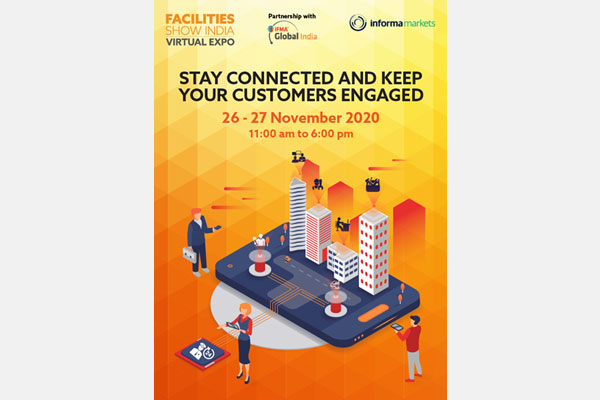
Facilities Show India Virtual Expo in Association with IFMA from 26-27 November 2020
Set up by the world’s largest exhibitions’ organizer, Informa markets in India, Facilities show India Virtual Expo is a premier expo and conference for the facilities management supplier industry. The show offers the ideal opportunities for suppliers to showcase their products & services virtually and to network, and connect with key decision makers from every level of a wide range of sectors.
A high-level virtual expo and conference, Facilities show India will bring together local and global manufacturers, suppliers, consultants and service providers to network with thousands of attendees from various facilities management verticals looking to procure latest products & services. The expo being a highly researched and planned platform to highlight an exciting array of products and services from smart solutions, security solutions, air conditioning & mechanical ventilation, energy management, environmental management, cleaning solutions, IT solutions, Facilities Services, workplace, HR services and much more.

Facilities Show India and IFMA join hands
For 40 years, International Facility Management Association’s (IFMA) mission has been to advance the professional discipline of facility management (FM) worldwide through credentialing programs, educational courses, networking, research and knowledge sharing. IFMA is the world’s largest and most widely recognized international association for facility management professionals, supporting more than 23,000 members in more than 100 countries.
Specifically, IFMA India is the premier resource for facility management professionals to optimize their facilities, teams and workplace projects in the world’s second-most populated country. As members of IFMA India, facility management professionals have access to knowledge platforms, by way of education, chapter workshops, networking opportunities involving professionals, subject matter experts, through associates who are directly and indirectly associated with the industry.
Facility Management (FM) refers to the use of a third-party service providers to maintain a part or entire building facility in a professional manner. It is increasingly gaining popularity amongst commercial as well as residential clients driven by modernization, rapid urban development and a growing awareness of advantages arising from outsourcing non-core business activities. The Indian facility management market accounts for 3.2% of the GDP of the country and is at present an INR 5 lakh crore market and is expected to grow at a rate of 20-25% annually. The market is highly fragmented with relatively few organized players. However, with the growing formalization of the economy, the proportion of organized players is steadily increasing. At present, the organized FM services industry in India is valued at INR 50 thousand crore constituting 10% of the total market. This is expected to grow to INR 1.25 lakh crore by 2022. In India FM services companies have only tapped 25% of the addressable market with 75% of this work still being undertaken in-house, a stark contrast to 49% at the global level.
The Indian Facilities Management (FM) industry is in the midst of rapid development. The anticipated growth in the market can be attributed to:
- Growth in commercial and residential real estate
- Increase in SEZs, mega food parks, smart cities and housing projects
- Greater awareness of cleanliness and hygiene amongst industries
- Reduction in operating costs of the facilities/buildings
- More outsourcing by corporates who were hitherto insourcing
- Inability to provide specialized cleaning by inhouse personnel
- Increased business activities from Tier-2 and Tier-3 cities
- Increase in outsourcing of facility management services by Government offices
Facilities show India is especially designed to bring suppliers and their customers together on an enriching business platform. It attracts users and decision-makers at all levels from a huge range of industries. One has sufficient scope to attract buyers and serve as a professional marketplace for Asian and overseas best suppliers. From education to retail, office to industrial, municipal to medical – thousands of Facility Managers and infrastructure owners will attend, eager to do business.
Reasons to exhibit
- Generate sales leads
- Raise awareness of your company, products and services
- Launch new products and services
- Meet existing clients and potential customers
- Network with colleagues and gain insights into the market
- Find Importers and suppliers
Facilities show India Virtual Conference: Decoding the Future Workplace
The virtual expo cum conference provides a platform to highlight an exciting array of products and services from smart solutions, security solutions, air conditioning & mechanical ventilation, energy management, environmental management, cleaning solutions, IT solutions, Facilities Services, workplace, HR services and much more. Some of the topics to be discussed at the two-day conference include:
- What’s making India a hotspot for co-working growth?
- Upskilling the facilities management staff – Need of the hour
- The Future of Facilities Is Digital – Are we ready to embrace the change?
- Smart Building technology shaping the future of Real Estate
- Realigning workplace strategy for workplace wellbeing
Visitor Profile
- Facility/ Admin / HR / IT
- Architects
- Operation Managers
- Security Professionals
- Facility Consultants
- Purchase Managers
- Electrical Engineers
- Health & Safety Managers
- Importers & Exporters
- Building Administrators
- Engineers
- Environment Managers
- Energy Managers
- QA / QC Managers
- Govt / Municipal Bodies
Supporting Association: Telangana Electronic Manufacturing Industries Association (TELMA)

Facilities Management - New Vistas, New Frontiers
We spoke to Architect Jit Kumar Gupta, Chairman, Chandigarh Chapter, Indian Green Building Council, who has more than half a century professional experience in Architecture, Urban planning and Architectural Education. In this interview he brings out several important facets of Facilities Management and its pivotal role in maintaining built environments, nurturing workplaces, creating employee experience and helping organisations grow.
Interviewed by Padma Ramakrishnan

Your views on the Connect between Architecture and Facilities Management.
Architecture and facilities management has great connectivity, because both operate in the domain of built environment. While architects focus on planning and designing of built spaces, Facility managers try to maintain those spaces to make them more productive, livable and sustainable. In fact role of architects and facility managers need high degree of synergisation in order to create qualitative and state of art built spaces; improve indoor environment; making people healthy and more productive; besides improving operational efficiency of the organization. Synergisation can also help in minimizing the operational cost for the organization and making optimum use of the available indoor space. In fact facility managers can help architects in improving the planning of indoor spaces, making them more qualitative and rational through better understanding of the role and importance of different spaces to be provided. Organizations taking up the creation of their own built spaces must ensure that architects are made to interact with facility managers before undertaking the design of the buildings. This would help architects, appreciate and understand the spatial requirement of the organization in a holistic manner and design the buildings accordingly. In the case of retrofitting of the buildings, rented by the organization, facility managers can help architects in better redesigning the internal spaces, involving minimum cost and minimum additions and alterations.
Is Facilities Management being Given its Due in India?
Facility management remains a new and emerging field in India. Despite its critical and ever widening role of the sector in the context of built environment and efficient operation of the organizations, it has not been given due recognition. In majority of cases, facility management remains highly fragmented and unprofessional, run largely on subjectivity and in an ad-hoc manner. But looking at the ever widening role of facility management, in terms of promoting functionality, comfort, safety and efficiency of the built environment, by integrating people, place, process and technology, one can understand that it needs to be made and treated like an independent profession requiring trained professionals for manning the task of facility management. Globally, facility management is widely recognized for its role and importance in efficient operation and the management of the organizations/institutions, but in India the concept is yet to catch the attention of the corporate sector. With large number of multi-nationals coming in India and setting up their Indian operations, demand for facility management has been on the rise. The profession is bound to have bright future in the years to come, considering the fact that India is projected to be the third largest economy of the world and more than 700-900 million square meter of built space is needed annually in urban India, to meet the space requirement of shelter and working.
FM - The Focus Areas. Where do you see the Future?
Facility management is known to have connectivity with large number of professions involved with; ensuring comfort; looking after the people; promoting safety ,security and efficiency of the workforce and the organization assets and making value addition to the built environment. Accordingly, profession works in tandem with professions of architecture, engineering, services providers, security, technology, operations, maintenance and upkeep of buildings etc. Looking at the present and future contexts, operational domain of the facility management will not remain confined merely to four walls of buildings. It is likely to extend far beyond the buildings, to impact communities and cities, both locally and globally. Technology will be the game changer and would play major role in expanding the operational domain of the facility management, connecting it with people, buildings, environment, safety, organizations and communities. Automation of the sector will be the focus area involving managing activities with minimum human intervention. Facility management will face major challenges in terms of promoting operational efficiency; improving productivity of the organization using state of art technologies involving IOT and ICT. Accordingly, profession will have to reinvent and redefine itself through the use of technologies’
Sustainability and FM - What Should be the Focus areas in your Opinion?
Sustainability, as an issue, as an option and as a strategy has been gaining currency in order to make this world safe, resilient and resource efficient. Even seventeen sustainable goals enunciated by UNO, has mandated all nations to promote sustainability in general and in the buildings ,in particular, by making them zero energy buildings by the year 2050 .Considering the entire context, promoting sustainability remains at the core of theory and practice of the facility management. No facility management can lead to optimization unless it is made sustainable. Operational domain of the facility management remains essentially the built environment and buildings are known for their dualities and contradictions. If buildings provide optimum, safe working and living conditions for human beings , they are also known to be large consumers of energy and resources besides generators of waste . Buildings are also responsible for creating heat island and promoting global warming. They also remain polluters of the environment and ecology. Accordingly, if buildings are to made energy efficient, resource efficient and providers of optimum living and working conditions, they need to be made green and sustainable. Accordingly, achieving sustainability shall remain at the core and the theme of all facility management ,ethics and practices.
How do you see Technology playing a Major Role in both FM and Sustainability?
Using technology on large scale appears to be the new normal, particularly looking at the abnormal situation created by the COVID 19, which has changed the entire context of the human living, working, interacting and socializing. Considering the need of keeping social distancing and minimizing the human contacts, technology is needed to help redefine the human fabric and its operations to achieve the objectives of limiting human interventions .Limiting the human contacts; promoting effective and efficient management of buildings and facilities, would require higher order of automation. Technology would need to be embedded in all building operations, including facility management to make them sustainable, safe and secure. Technology is known to make work places operationally efficient, more sustainable and least consumers of energy and resources. Looking at the new agenda of office functioning, with majority of persons working on virtual basis from home, technology will have to be leveraged for enabling effective and efficient virtual working and integrating virtual working with real time working of the organization. With changing pattern and norm of working, involving lesser human contacts, large office space will remain unused due to lesser people working physically. Technology will be needed for facility management to achieve cost-effectiveness in all its operations. Making work places safe for real time working ,would also need high degree of building automation involving touch-less doors, windows, toilets ,electrical appliances, wash basins, water closets, taps etc. Sensors would be needed on large scale for effectively and efficiently managing the facilities in the organization.
Any Other Key Areas you Would like to Highlight.
Looking at the prevailing scenario, facility management is passing through a period of enormous stress and strain. With cost cutting becoming the order of the day, sector will have to reinvent and redefine itself to remain relevant, sustainable and cost-effective. Health and safety will remain the guiding parameters of facility management. Redesigning and retrofitting of built spaces will emerge critical areas of operation. With buildings and facilities undergoing more automation, role of technology will become critical. Technology will be needed to make the entire gamut of facility management, not only more effective and efficient but also cost-effective, time-efficient, transparent and productive , involving minimum manpower. From merely operating in the area of building maintenance, upkeep, safety, security etc sector must graduate to become driver of automation of office operations; working with architects for designing/ optimization of spaces ;improving indoor quality of air; promoting health, wellness and well beings of the manpower engaged in organization; improve productivity , promoting building automation, making buildings green, promoting sustainability and evolving efficient real estate models. In addition, professional courses in the universities need to be run to produce quality professionals to man the sector and make it more rational and sustainable. Sector must be opened to attract architects , engineers, service providers, persons with soft skills in ICT,IOT,management skills etc to make professional most vibrant and innovative. Despite existing challenges, profession remains highly relevant and shall have greater role to play in; making organizations and built environment, operationally more efficient, more productive, cost-effective, and sustainable besides promoting national economy and economic eco-system..
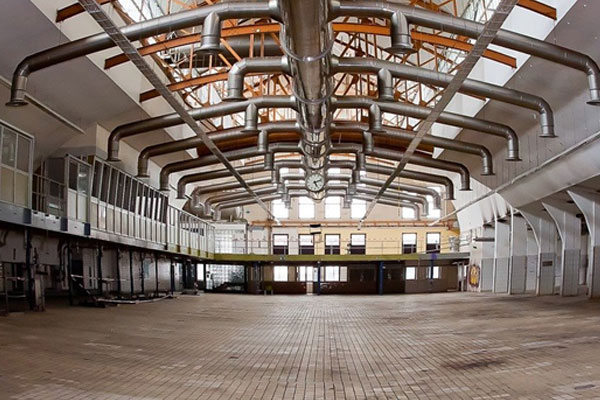
Technology & Materials in Managing the Post-COVID Workplace
As we envision a safe return to workplace of the employees post CoVID, technology and materials will play a key role in success of this process. As an immediate response to the pandemic, communication technology has emerged as the topmost technology driver. Remote working is critical, and collaboration tools are a must have for a productive environment. With mass quarantines and complete lock-downs, the epidemic has ignited and amplified the debate over the future of work.
Yet, the virus definitely won’t kill the concept of working in standard office buildings. As companies plan how to bring their workforce together again in the office, numerous calculations are being made to provide an environment that will keep workers safe, healthy, and productive and allay fears.
The following 4 concepts A-B-C-D are a good place to start thinking about the technologies and materials that will be the key to managing the Post-CoVID Workplace.
“A” for Automated:
Employees could eliminate the need to press communal buttons by using their smartphone to send a command to the elevator. Conference rooms could be fitted out with voice-activated technologies to control lighting, audio and visual equipment. Passing through doors or flushing the toilet would require a simple wave. Contactless pathways at the office entrance, whereby employees rarely need to touch the building with their hands, and office doors open automatically using motion sensors and facial recognition.
Simple technology like Amazon Alexa for Business, for example, could become a new interface and remove the need for physically pushing a button or touching a surface in an office. There are other apps helping to make the next iteration of the office a contactless one; such as using near-field communication instead of keycards to give employees access to a building or lift system via their smartphone, or to buy food and drink from cash-free workplace canteens.
Successful implementation depends on what level of existing technology is already in place.
“B” for Breathable:
It may not be possible to return to the workplace until HVAC systems are properly adjusted. The relationship between HVAC and viral spread is still being studied but use of operable windows, or other ways of natural ventilation where available, is going to be a part of the future breathable office.
Air filtration systems will need radical technology upgrade, including installation of passive features like HEPA Filters, Activated Carbon Filters and Active Devices like UV and Electrostatic Precipitation. Methods used in “clean rooms” for technical facilities and healthcare can filter virus particles, but may not be practical or affordable for most workplaces.
- Antimicrobial filters, bi-polar ionization, and UV lights for return air openings
- Increased airflow and longer system operation times
- Continuous operation of ventilation systems in communal spaces
- Increased sanitation of ductwork with aerosol sprays or UV light.
“C” for Clean:
Technology investments can make a building perform better for people while also improving public health. Touchless surfaces make a significant difference in both perceived and real cleanliness. Smart lighting reduces contact with shared surfaces, and it can also be customized to each user’s preferences.
One of the guiding principles is choosing materials that can withstand heavy cleaning using caustic products. Porous surfaces like natural oiled wood will be avoided, with a preference for stone or laminates. Fabrics and Carpets will be used that can withstand heavy and frequent shampooing. These more durable materials are not necessarily costlier than the more familiar alternatives. Few organisations will have a budget for an expensive refit. Work practices may continue to evolve, so it is important to keep close coordination with maintenance personnel.
Restrooms are critical to the user experience of spaces, and pantries offer refreshments and socialization. Most occupants of the building will use one or both of these spaces every day. They include plumbing fixtures and, in the case of pantries, food handling.
Toilet facilities that were merely adequate pre-COVID may now actually seem problematic to users. Adding spray disinfectant units and lids with UVC or Far-UVC lamps to toilets and at a minimum, adding lids to toilets that do not already have them to minimize contaminant dispersion could be the short term solutions. Installing new hands-free toilets with built-in sanitization mechanisms, UVC lamps or Far-UVC systems to aid in stall sanitization could be long term solutions.
Occupancy sensors can support multiple components of the clean workplace. For example, they can enable maintenance staff to see which spaces are being used—and need to be cleaned—and which spaces have not been occupied since the previous cleaning.
Society’s heightened awareness of contagious diseases could usher in a new type of office – one that has elements in common with a hospital. If nothing else, the idea of coming to work while sick could become socially unacceptable. On the other end of the spectrum is a focus on health and hygiene so pronounced that it gives new meaning to the idea of working in a sterile environment.
“D” for Data:
All workplace strategies should be informed by social data. In addition to providing valuable social data that will make the return to the office more successful—such as who should be at work at the same time and how they will be seated—this engagement also lays critical groundwork for any contact-tracing efforts that may become necessary if an employee becomes ill.
Social data can be paired with information from building systems to map employee interactions. Building security systems already offer records of the comings and goings of employees and visitors. Room booking apps and occupancy sensors can provide data on who has shared space. Colleagues who may have been exposed can then be alerted and either seek treatment or take mitigation actions. Maintenance staff can prioritize areas that may be contaminated.
BIM will be able to integrate the facility and the person who works there. Mobile IOT will be able to track every individual and would be useful for detection and other purposes.
This is the first time the current generation has experienced a pandemic. Whatever happens in the months ahead, and even if a Covid-19 vaccine becomes available, it seems likely that the experience of living through a pandemic will have a long-lasting impact on the way we work and how our workplaces function. The opportunity for the workplace is to move forward, not backward. And technology and materials will play the key role in the Post-COVID workplace.
Dinabandhu Patra, Owner, Across & Beyond Development Consultancy

Meet COVID-19 ventilation needs without having to make manual adjustments to each system
Transformative Wave, a provider of HVAC and building automation solutions, has just announced what it calls a breakthrough new feature to its award-winning eIQ Platform designed to enable facilities managers (FMs) to automate ventilation adjustments to comply with The Centers for Disease Control and Prevention (CDC) recommendations associated with the COVID-19 pandemic. The CDC has issued guidelines for commercial buildings including malls, retail stores, and restaurants to increase the amount of fresh outside air from heating, ventilation and air-conditioning (HVAC) systems as a strategy for mitigating the spread of the SARS-CoV-2 coronavirus that causes COVID-19.
New York and Connecticut, to name two, have made compliance with these standards a requirement for certain businesses seeking to reopen indoor operations. Compliance presents an extreme challenge for the majority of businesses who are interested in making their facilities as safe as possible, says Transformative Wave.
Modifications to an HVAC system’s ventilation settings and schedules typically require a technician to visit each individual facility to make manual adjustments to each HVAC system. This represents a significant expense and management nightmare, says the company.
Alex Douris, energy specialist at H&M, explained about his company’s experience:
We were faced with the need to increase ventilation rates in order to reopen 19 of our stores in New York and Connecticut. With Transformative Wave, all we had to do is call and ask them to make it happen. With our older building automation system, we would have been forced to physically go out to hundreds of HVAC units in order to do what Transformative Wave did in a few hours for us. The cost would have been significant.
Compliance with CDC guidelines requires operators to change three HVAC settings:
- Eliminate demand-controlled ventilation (DCV)
- Increase the minimum amount of outside air; and
- Extend the length of time the HVAC systems operate (up to 24/7).
The Enhanced Ventilation Mode addresses all three by allowing users to set multiple ventilation schedules with increased outside air assignments for each period. It is possible to aggressively purge the building with fresh air prior to occupancy and/or ventilate at predetermined levels for longer periods of time.
Transformative Wave’s eIQ Platform is a robust building automation and energy efficiency technology engineered to go beyond the limitations of conventional control systems and automate the process of making complex changes in ventilation settings and schedules.
Enhanced Ventilation Mode can be applied globally across all buildings in a customer’s portfolio or only to select buildings and individual HVAC units in the portfolio. This flexibility allows FMs to navigate variations in local standards, occupancies or climate realities.
Once the Enhanced Ventilation Mode parameters have been defined, enabling and disabling is accomplished with the “push of a virtual button” in the eIQ Platform user interface.
According to Transformative Wave, automated compliance is simply not within the reach of the majority of building operators in the retail sectors. It requires direct control over the HVAC system’s outside air dampers, operating schedules, and existing ventilation settings. The company’s innovative technologies make these kinds of operational changes possible.
Another advantage of this feature is the ability for operators to return systems to normal ventilation settings once the pandemic has passed; a return to pandemic ventilation standards can be easily accomplished should it be necessary due to an isolated or widespread outbreak. This is a mechanism for enterprises to protect themselves now and in the future.
Complying with these COVID-inspired guidelines can have adverse effects on comfort and energy costs. Transformative Wave’s family of products helps building operators make pandemic-related ventilation changes with minimal increase in energy expense and impact on indoor comfort.

Minimize crowds and enhance security at your elevators with this touchless solution
braXos, a developer of building security and connectivity solutions, has just launched LiftOff, a touchless solution for elevators designed to enable safe, secure and convenient vertical transportation in residential and commercial buildings. LiftOff works with destination dispatch elevator systems from nearly all major manufacturers and does not require users to scan a device or card at the elevator kiosk, minimizing the crowds that can congregate in front of elevators during peak periods.
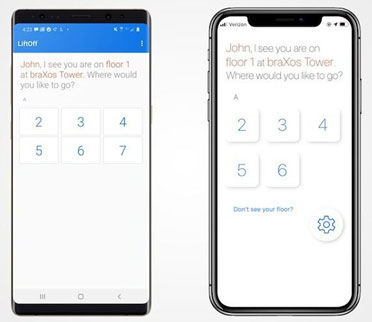
LiftOff recognizes the user’s location as they enter the building and automatically retrieves the next available elevator cab based on the floor selected in the app. The LiftOff user can then go directly to the waiting elevator and be transported to their residence or office quickly and without contacting any building surface. By scheduling an automatic elevator call in advance, users can seamlessly arrive at their destination floor without having to take out their phone.
Building or facilities managers (FMs) control the floors that individuals or groups can access through LiftOff administrative functions.
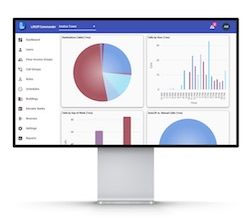
Tom Skoulis, chief executive officer at braXos, stated:
By delivering safe, secure and convenient elevator management, LiftOff represents the future of vertical transportation but is especially relevant today. As property managers prepare their facilities for return to work following work from home orders, LiftOff eliminates a common touchpoint within their buildings — the elevator kiosk — while effectively managing traffic in the lobby to enable social distancing and limiting users to floors they are authorized to access.
The LiftOff mobile app is available now on the Apple App Store and Google Play. The app confirms the physical location of the user, as well as authorized floors available to travel. LiftOff is the first application of braXos Smart Architecture, which is creating new possibilities for building access and security.
braXos is a privately held global developer of building security and connectivity solutions intended to shape the future of vertical transportation. The company’s Steward middleware security platform and family of Connectors are being used today by leaders in the hospitality and commercial real estate industries to close security gaps in vertical transportation.
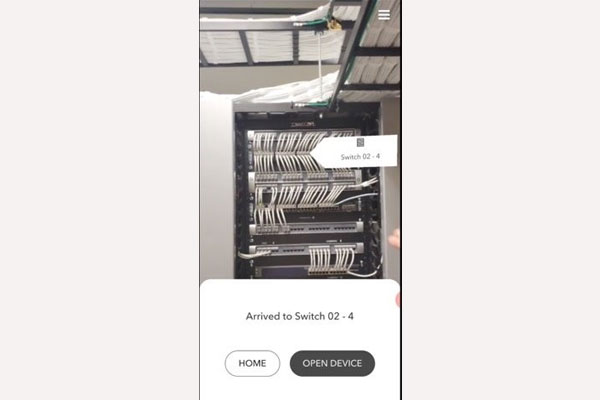
Use augmented reality tech to troubleshoot smart building equipment at a distance
Artificial intelligence (AI) and augmented reality (AR) company Resonai recently launched the Vera AR computer vision platform, which CommScope, a global leader in infrastructure solutions for communications networks, is now using to enable remote operation and maintenance of communications infrastructure to reduce physical exposure to smart building equipment and other individuals during the COVID-19 shutdowns and as buildings begin to reopen.
Artificial intelligence (AI) and augmented reality (AR) company Resonai recently launched the Vera AR computer vision platform, which CommScope, a global leader in infrastructure solutions for communications networks, is now using to enable remote operation and maintenance of communications infrastructure to reduce physical exposure to smart building equipment and other individuals during the COVID-19 shutdowns and as buildings begin to reopen.
Resonai’s Vera platform
Vera is an AR computer vision platform designed to transform physical spaces into intelligent digital assets by creating intelligent “digital twins.” Augmented reality combines the real world with the virtual world; for example, using a photo of a real space and adding layers of digital information to it. Resonai’s Vera technology embeds intelligence into a physical space so that any device can navigate through it, apply logic, and continuously learn from the surroundings.
In commercial real estate, Vera applications are being used across the building life cycle. Vera apps for Maintenance & Operations of buildings, that combine indoor search and navigation, smart ticketing systems, AR tutorials for devices, preventive maintenance tools, access control systems and vision-based internet of things (IoT) controllers, are demonstrating strong return on investment (ROI), according to Resonai.
For example, tenants can use an app to easily report maintenance problems on their mobile phones, while technicians receive navigation instructions to the problem along with relevant data, and can even see “behind walls” to make repairs, according to a Vera user.
The company lists additional benefits for retail and entertainment facilities.

CommScope partners with Resonai to enhance AR for smart buildings
CommScope is working with Resonai to explore building an application based on Resonai’s Vera platform to leverage the benefits of AR for installation, operation and maintenance of communications infrastructure in a building or campus environment. This expands CommScope’s focus on automated infrastructure management to include Vera’s AR cloud technology along with several CommScope in-building connectivity products.
Companies today can create a three-dimensional (3D) digital representation of a physical space. But there are very few AR platforms on the market that can generate a highly accurate and very precise “intelligent” digital twin needed to address real business issues, according to CommScope. This technology allows building owners and operators to leverage the computing power of the AR cloud to create new user experiences that were previously impossible, gain access to a whole new level of user analytics, and even identify new monetization models from the digital real estate that is created.
For example, this type of AR application enables a user to expediently identify and locate faulty smart building equipment, identify accurate placement and installation of new equipment, access step-by-step guidance for maintenance tasks, and perform these activities with equal efficiencies in a small or large building.
Ernie Pickens, senior vice president of Enterprise Solutions, CommScope, stated:
CommScope continues to explore unique ways for our campus and building customers to operate their networks more effectively and more efficiently. Our work with Resonai in augmented reality continues to show promise and opens up collaboration opportunities across the intelligent building ecosystem.
Emil Alon, CEO and founder of Resonai, commented:
We’re thrilled to be working with CommScope to demonstrate how AR can improve business functionality on a global scale. Once a building is converted into an intelligent digital twin in the AR cloud, CommScope and its customers can access applications that will have direct, tangible impact on business operations.
CommScope first announced its work with AR technology back in April of 2018. At that time the efforts were focused on augmented reality (AR) with CommScope’s imVision automated infrastructure management solution to help customers “see” what the naked eye cannot. Some of this initial work included visualization of cable pathways above a ceiling and identification of which outlets have power over ethernet (PoE) capability.
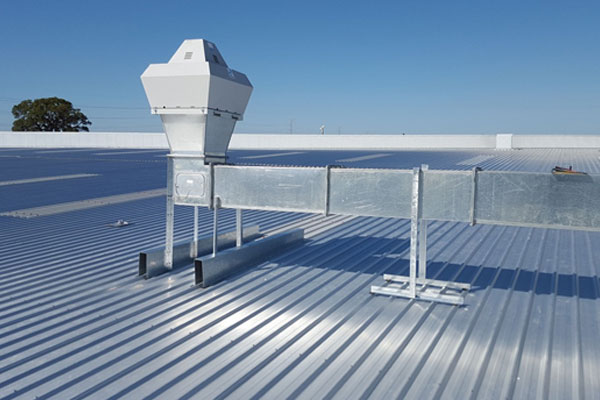
ASHRAE’s HVAC checklists to reduce airborne transmission of coronavirus
Global building technology society ASHRAE just announced that the ASHRAE Epidemic Task Force has developed guidance on the operation of heating, ventilation and air-conditioning (HVAC) systems to help mitigate the airborne transmission of the SARS-CoV-2 coronavirus that causes COVID-19 as education facilities prepare to reopen in the fall for the academic year.
The 41-page Presentation includes convenient checklists to prepare educational buildings to resume occupancy, such as starting up HVAC systems, as well as checks and verifications to maintain during the academic school year. The guidance is meant to provide practical information to school districts and university campus environmental health managers, facilities managers (FMs), administrators, technicians and service providers.
2020-21 ASHRAE President Charles E. Gulledge III, P.E., stated:
As schools prepare to reopen for the fall academic semester, it’s important to keep children and school staff safe. ASHRAE’s school reopening guide will serve as a resource to school leaders as they work in lockstep with health experts to finalize plans to keep everyone safe.
The guide includes the following topics:
- Determining Building Readiness
- Equipment and System Specific Checks and Verifications During the Academic Year
- New/Modified Facility Design Recommendations
- Filtration Upgrades
- Operations of Occupied Facilities
- Controlling Infection Outbreak in School Facilities
- Higher Education Facilities Recommendations
Also included is guidance formulated to help designers retrofit and plan for the improvement of indoor air quality (IAQ) and to slow the transmission of viruses via the HVAC systems, as well as new guidance on student health facilities, laboratories, athletic facilities, residence halls, and large assemblies, lectures and theatres.
Corey Metzger, ASHRAE Epidemic Task Force Schools Team pointed out:
School and university officials are challenged with making very difficult decisions on how to best protect both students and staff as education facilities reopen. This guidance offers a solid framework on ventilation control, filtration and maintenance that can be applied to different climate zones, building types and HVAC systems.
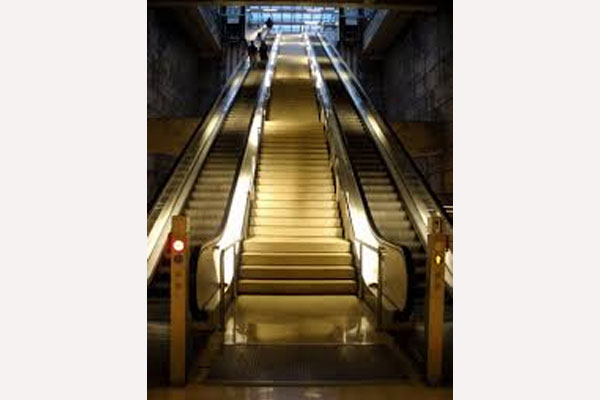
Update mechanical, lighting and building envelope energy efficiency standards from ANSI/ASHRAE’s new release
Global building technology society ASHRAE has released an expanded, revised version of a well-known energy standard. ANSI/ASHRAE/IES Standard 90.1-2019, Energy Efficiency Standard for Buildings Except Low-Rise Residential Buildings, contains more than 100 changes from the 2016 version, including numerous energy-saving measures.
Drake Erbe, chair of the Standard 90.1 committee, stated:
The goal of the 2019 version of 90.1 was to provide clearer guidance for exceeding efficiency goals. This new version focuses on energy-saving measures which we hope will reward designs for achieving energy cost levels above the standard minimum and result in more efficient buildings and more innovative solutions.
Some significant changes include:
- Administration and Enforcement: Commissioning requirements were added to the standard for the first time. Section 4.2.5, “Verification, Testing, and Commissioning,” was greatly expanded and requirements were outlined for commissioning in accordance with ASHRAE/IES Standard 202.
- Building Envelope: For vertical fenestration, the categories of “nonmetal framed” and “metal framed” products were combined. Minimum criteria for SHGC and U-factor were upgraded across all climate zones. The air leakage section was revised to clarify compliance. Changes to the vestibule section refined the exceptions and added a new option and associated criteria for using air curtains.
- Lighting: Lighting power allowances for the Space-by-Space Method and the Building Area Method were modified. The model is more representative of real-world conditions with the inclusion of updated IES recommendations. A new simplified method for lighting (new Section 9.2) was added. Lighting control requirements for parking garages were updated. Daylight-responsive requirements and side-lighting requirements were updated.
- Mechanical: New requirements were defined to allow designers the option to use ASHRAE Standard 90.4 instead of ASHRAE/IES Standard 90.1 requirements in computer rooms that have an IT equipment load larger than 10 kW. Pump definitions, requirements and efficiency tables are included in the standard for the first time.
- Energy Cost Budget Method: Numerous changes were made to ensure continuity. The baseline was set for on-site electricity generation systems.
- Performance Rating Method: Appendix G rules and the corresponding baseline efficiency requirement were clarified. Explicit heating and cooling COPs were provided without fan for the baseline packaged cooling equipment. Rules were added for modeling the impact of automatic receptacle controls. More specific baseline rules were set for infiltration modeling. Clarification was added for how plant and coil sizing should be performed. Building performance factors in Section 4 were updated.
- Both Compliance Paths: Clearer and more specific rules were added related to how renewables are treated. Extensive updates were added to the rules for lighting modeling.
Also new to the standard is use of the new fan energy index (FEI) as the metric for energy efficiency provisions for commercial and industrial fans and blowers.
Standard 90.1 has been a benchmark for the commercial building energy codes in the United States and a key basis for codes and standards around the world. The 2019 version is the 11th edition published since the original standard was first published in 1975 during the US energy crisis.


